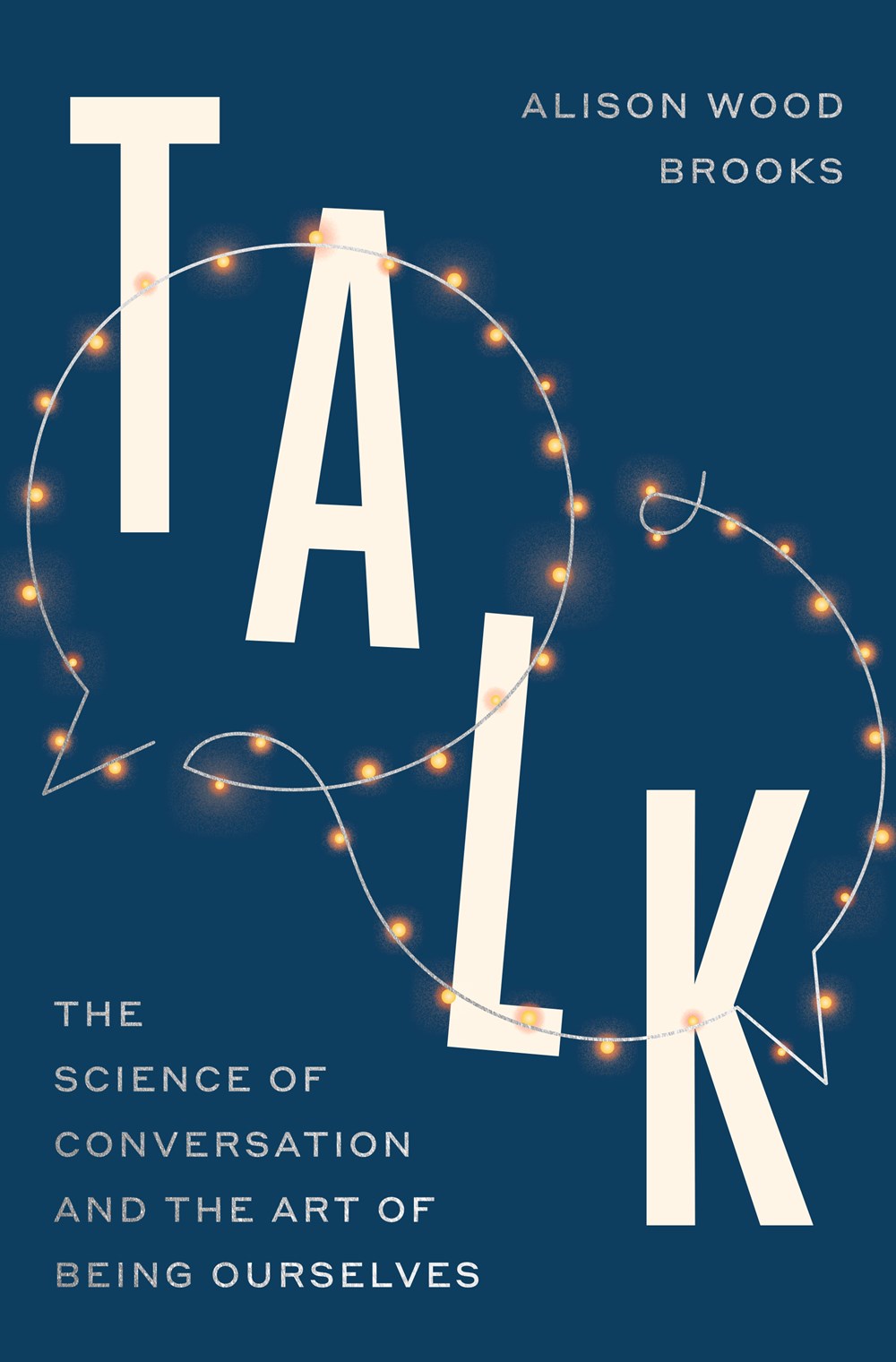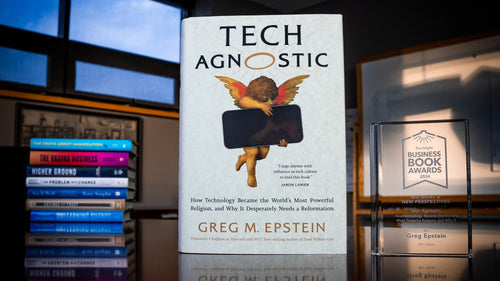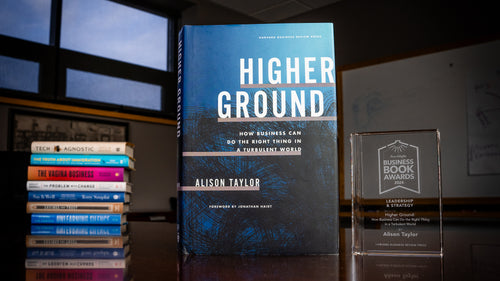An Excerpt from Talk
 We all find it challenging to have difficult conversations, and sometimes even the easier ones can be tricky. Although talking is a part of our daily lives, Harvard professor Alison Wood Brooks argues that conversations are among the most complex, demanding, and delicate activities we engage in. Conversations can often lead to misinterpretations and misunderstandings. However, when conducted effectively, they can bring us immense joy by allowing us to express our identities and understand others, fostering a sense of connection, love, and vitality.
We all find it challenging to have difficult conversations, and sometimes even the easier ones can be tricky. Although talking is a part of our daily lives, Harvard professor Alison Wood Brooks argues that conversations are among the most complex, demanding, and delicate activities we engage in. Conversations can often lead to misinterpretations and misunderstandings. However, when conducted effectively, they can bring us immense joy by allowing us to express our identities and understand others, fostering a sense of connection, love, and vitality.
In this excerpt from her new book, Talk, Brooks discusses the changing definition of conversation and the benefits of engaging with intention. She highlights the conversational skills of philosopher Immanuel Kant, illustrating how a thoughtfully curated environment and clearly defined parameters enabled guests to engage in meaningful discussions and, as a result, made Kant's dinner invitations highly sought after.
◊◊◊◊◊
The Coordination Game
Think of a conversation you had recently. What are you imagining? Domestic chitchat at home? A grid of faces on Zoom or Microsoft Teams, brainstorming? Grocery store gossip? An oozy first date? That sprawling group text chain. A catch-up with your mom. A smoke break in a greasy alley. Pillow talk. Delightfully disordered chitchat with children. A tense work meeting. Polite banter with the cashier. A sincere heart-to-heart.
All are excellent examples. These days, any back-and-forth exchange of words between two or more people counts as conversation. And not only in the soulless world of behavioral science, in which I work, but for most people, everywhere in the world. Merriam-Webster says conversation is “oral exchange of sentiments, observations, opinions, or ideas,” Wikipedia describes conversation as “interactive communication between two or more people,” and the Oxford English Dictionary defines it as “a talk, especially an informal one, between two or more people, in which news and ideas are exchanged.” Though our understanding of conversation today is pragmatic, the definition of conversation was not always so.
Three centuries ago, conversation meant something very different and quite specific (and none of the examples above would have qualified!). It was a high art, defined by elevated exchanges on high-minded topics: opera, poetry, politics, freedom. It took place between particular people—the most cultivated aristocrats and accomplished writers and thinkers of the day. For these luminaries, the art of conversation was itself a fascinating topic of conversation—it was the early days of talking about talking. What defined conversation? And what defined a great one, especially? Which nation practiced it best? This was the Age of Conversation, and almost everyone who was anyone had a view.
The philosophers and socialites who took up these questions—David Hume, Adam Smith, Jonathan Swift, Germaine de Staël, and Johann Wolfgang von Goethe, to name a few—agreed that conversation should be mutually “pleasurable” and “agreeable” for everyone involved, which meant it had no room for “strong opinions.” In her essay “The Spirit of Conversation” (1813), the celebrated Madame de Staël, who presided over one of Paris’s most glittering salons, compared conversation to music and wrote of the former: “It is a certain manner of acting upon one another, of giving mutual and instantaneous delight, of speaking the moment one thinks . . . of eliciting, at will, the electric sparks which relieve some of the excess of their vivacity, and serve to awaken others out of a state of painful apathy.”
You might be thinking, shouldn’t this emphasis on mutual pleasure go without saying? Who wants to host a gathering that only a few people will enjoy? But this seemingly obvious platitude was much less obvious back in the day. In fact, it was pointed. Conversation then meant enlightenment, sparkling and spirited intellectual exchange among people who had the quality of mind and the social graces to generate it. And, crucially, it also meant freedom from the rigid hierarchy and rituals that defined court life in an absolute monarchy. In the decades before and after the French Revolution, dissatisfaction with dynastic rule was rampant. And conversation emerged as a fresh alternative to the old world order. In the salons of Paris, where the men and women who inhabited the so-called “republic of letters” gathered, conversation was not performed for the pleasure of the king, according to rules he dictated. Conversation was practiced for the mutual pleasure of the enlightened, according to rules they devised for themselves. Ooh la la!
Kant’s Rules
Paris was the center of the salons, but “polite conversation” was a topic of fascination all across Europe. In Germany, the great eighteenth-century philosopher Immanuel Kant, author of the age-defining essay “What Is Enlightenment?” (which is still a staple of college courses around the world), was among those who opined on the benefits of polite conversation and its best practices.
For most of his long life, Kant eked out a living as a tutor, teacher, and librarian, hoping to land a full-time university post. His small income relegated him to rooming houses—which meant that, unless he was invited to dine at the homes of friends, as he often was, he had to seek dinner companions in public houses. Despite Kant’s reputation for extreme austerity and self-discipline, contemporary accounts portray him as a vivacious and charming guest, whose company was sought after by the town’s most illustrious hosts. Kant cherished these private occasions, but after years of supping mostly at local restaurants and hotels, he tired of the boisterous and banal exchanges he found at communal tables. When he finally procured an academic position and was able to buy a house of his own, not long before his sixtieth birthday, he decided to start hosting dinners himself. Finally, he could pick his guests—and his conversation. If you’re going to stay in one small, remote town your whole life, you’d better make it fabulous. And he did! Kant’s invitations were highly coveted. One excited invitee marveled at having been “asked to table by the King in Königsberg.”
Aside from the presence of the Great Man himself, part of what made the dinners special were the rules of conversation he insisted on. Some of the rules were common to the women and men of letters who shaped the Age of Conversation—no interrupting, no monologuing, no talking shop. But many others were peculiar to Kant. Guests should be a mix of ages and backgrounds—professors, physicians, clergy. Never fewer than three guests, but never more than nine—usually five to eight people. After arriving promptly at one p.m., they would follow a three-course “topic menu” starting with light fare—the news of the day, weather, and gossip.
During the main meal, they would turn to serious topics like chemistry, meteorology, natural history, and above all politics (such as the evolving French Revolution, a topic that fascinated Kant)—but never politics before dinner. They would conclude the meal with “jesting,” lighthearted banter that would elicit laughter and thus, according to Kant, “help the stomach in the digestive process by moving the diaphragm and intestines.” There was to be plenty of food and wine, but no beer, no music, no games, and no lulls in conversation. And his number-one rule: no know-it-alls. In fact, he often dealt with disagreements (about the French Revolution or otherwise) by asking that they avoid the topic altogether.
In Kant’s view, his private dinner parties offered a refuge from the unruly hubbub of public eating places, a safe haven where the art of conversation could flourish. I’ll bet that for some of us, the rowdy pub conversations would have been more fascinating than Kant’s dinners, even if they were less “polite” or rarified. Still, while Kant carefully devised polite conversation in his home, the educated Europeans who belonged to the republic of letters were already, by that time, coming to the conclusion that the art of conversation was in decline. Dispatches from America, where the great social and political experiment of democracy was underway, confirmed striking lapses. The new-world elite were violating many of the rules of polite conversation that their old-world counterparts, including Kant, swore by, not least by talking about vulgar topics like money, work, and themselves.
In London, too, conversation was becoming more unruly. As the city swelled with the bustle of accelerating trade, commerce, new sources of wealth, and new residents of all classes, the unpredictability of everyday social life was a source of constant commentary and speculation. Streets, markets, shops, parks, and pubs: life outside the highly curated worlds of the dinner party or private salon required chats between people who lacked the shared rules, histories, and rituals that had once ranked them and told them how to behave. Friends and strangers constantly crossed one’s path in bewildering profusion, observed the Scottish philosopher Adam Smith, and that bewilderment required “continual” observation of “the conduct of others” as well as constant “adjustment” and “compromise.” In “a society of strangers,” where people from all classes encountered each other more often and in more places than ever before, conversation was no longer a matter of following explicit rules. It was increasingly a matter of people figuring out the implicit rules and adjusting on the fly. How should they address one another, and what should they talk about? For how long? How much shared information could be assumed or taken for granted? How was one to distinguish a maid from her mistress if they dressed alike, as they now often did? And did it even matter? Gasp!



